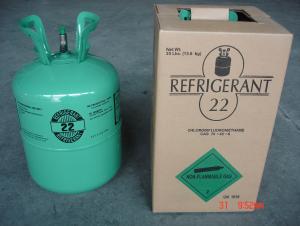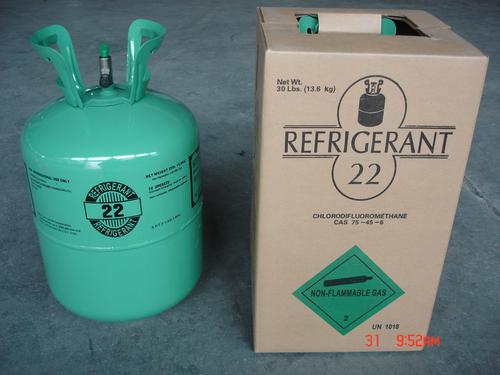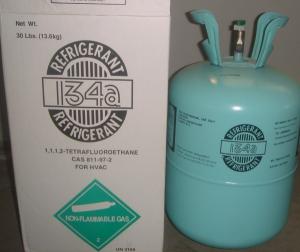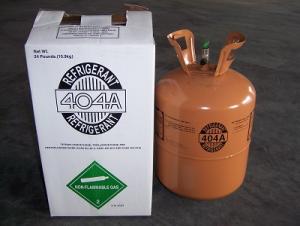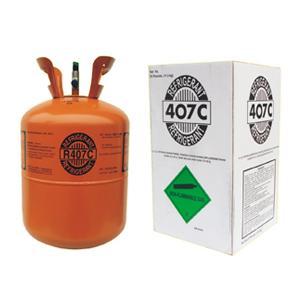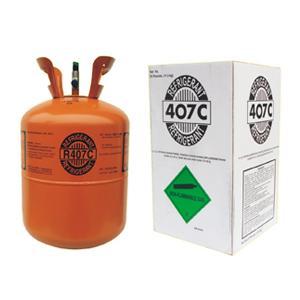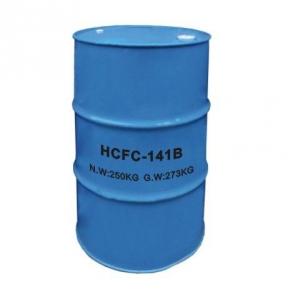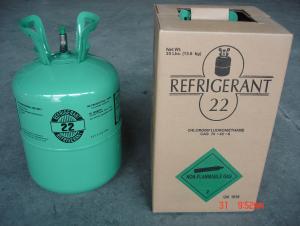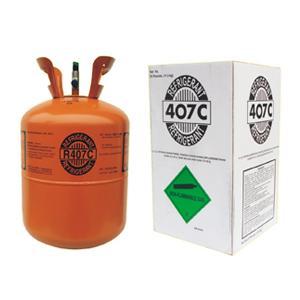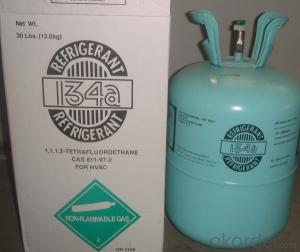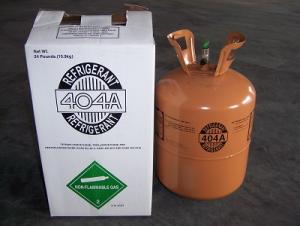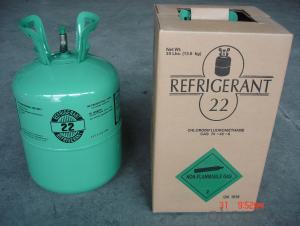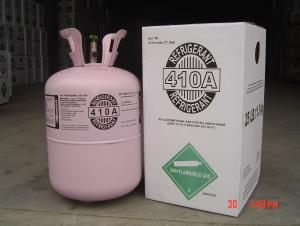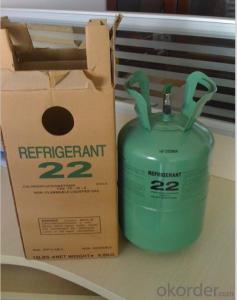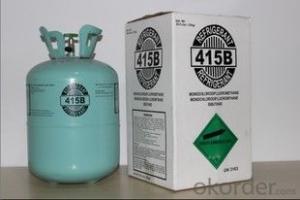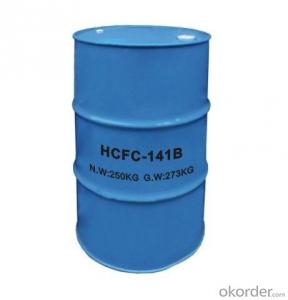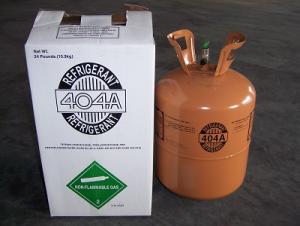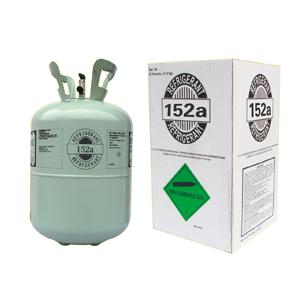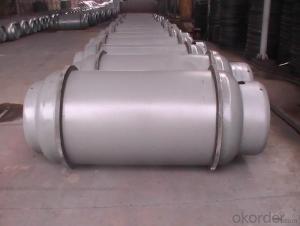Common Used R22 Gas
- Loading Port:
- Ningbo
- Payment Terms:
- TT OR LC
- Min Order Qty:
- -
- Supply Capability:
- 100MT m.t./month
OKorder Service Pledge
OKorder Financial Service
You Might Also Like
Property of chloride : |
| ||||||||||||||||||
Packing: | Disposable cylinder 30lb/13.6kg,50lb/22.7kg recyclable cylinder 400L, 800L, 926L,1000L, ISO-Tank | ||||||||||||||||||
| |||||||||||||||||||
Quality standard : |
Acidity,PPm ≤0.1 | ||||||||||||||||||
R22 is primarily used as a refrigerant compound as well as in the production of polystyrene and polyurethane foam plastics.It is the most common refrigerant worldwide,however,it is going away
- Q: What does organic and inorganic mean?
- [Inorganic] inorganic is inorganic compounds referred to, usually refers to non-carbon compounds. A small number of carbon-containing compounds, such as carbon monoxide, carbon dioxide, carbonates, cyanides, etc. are also inorganic. Inorganic materials can be divided into oxides, acids, alkalis, salts and so on. Organic compounds Definitions Organic compounds usually refer to carbon-containing compounds, or hydrocarbons, and their derivatives, are collectively referred to as organic compounds.
- Q: What is the hydrocarbon thing
- Hydrocarbon, which is composed of two elements, consists of carbon and hydrogen. It is called a hydrocarbon and a hydrocarbon, which reacts with chlorine, bromine vapor, oxygen and so on. It does not react with strong acid, strong base, strong oxidizer (Such as: potassium permanganate) reaction, such as methane and chlorine in the light conditions of reaction to produce methyl chloride, dichloromethane, chloroform (chloroform) and tetrachloromethane (carbon tetrachloride) and other derivatives in the Hydrocarbon molecules in the carbon atoms connected to each other to form a carbon chain or carbon ring molecular skeleton, a certain number of hydrogen atoms attached to the carbon atoms, so that each carbon atom to maintain the price of the type of hydrocarbon is very much, the structure of known hydrocarbons More than 2,000 hydrocarbons are the parent of an organic compound. Other organic compounds can be seen as derivatives of one or more hydrogen atoms in the hydrocarbon molecule that are replaced by atoms or radicals of other elements. Word, is the use of "carbon" consonant with "hydrogen" vowel synthesis of a word, with "carbon" and "hydrogen" the composition of the internal structure of the word, the hydrocarbon is the parent of all organic compounds can be said that all Organic compounds are nothing but the result of replacing some of the atoms in the hydrocarbons with other atoms.
- Q: Is polyethylene a derivative of hydrocarbons?
- No, the derivative of the hydrocarbon is an element other than c.H
- Q: Hydrocarbons and hydrocarbon derivatives are not all non-electrolytes
- Hydrocarbons are, derivatives are not necessarily, such as organic acids (formic acid, acetic acid, etc.)
- Q: The role of aromatic hydrocarbons
- Two cases: First, the name of monocyclic aromatic hydrocarbons, usually benzene ring for the mother, alkyl as a substituent. Second, the structure is more complex aromatic hydrocarbons, usually based on the hydrocarbon base, benzene ring as a substituent. Xylene, 2-methyl-3-phenylpentane, diphenylmethane, etc. For the naming of multifunctional compounds, attention is given to the priority order of the functional groups. The priority is preceded by the parent, usually: cations, COOH SO2H, COOR, COCl, CONH2, CN, CHO, CO, OH, SH, NH2, alkynes, alkenes, ethers, X, NO2, etc. [2]
- Q: What is the difference between organic matter and inorganic matter?
- Organic matter that organic compounds. Carbon compounds (carbon monoxide, carbon dioxide, carbonates, metal carbides and other rare carbon compounds excluded) or hydrocarbons and their derivatives in general. Organic matter is the material basis for life.
- Q: What is the definition of organic matter
- Organic matter usually refers to carbon-containing compounds, or hydrocarbons and their derivatives are collectively referred to as organic compounds.
- Q: Is steel not organic synthetic material?
- Organic compounds that are organic compounds. Carbon compounds (carbon monoxide, carbon dioxide, carbonic acid, carbonates, metal carbides, cyanide excluded) or hydrocarbons and their derivatives in general. Most of the combustion can produce carbon dioxide and water.
- Q: What are the characteristics of organic compounds?
- Organic compounds are usually referred to as carbon-containing compounds, or hydrocarbon-containing compounds and their derivatives are collectively referred to as organic matter. Organic compounds are generally insoluble in water and soluble in organic solvents with lower melting points. The vast majority of organic matter heat easily decomposed, easy to burn. The reaction of organic matter is generally slow and often accompanied by side effects, and there are many kinds of organic compounds, which can be divided into two major categories of hydrocarbon and hydrocarbon derivatives. According to the organic groups contained in the functional groups, divided into alkanes, alkenes, alkynes, aromatic hydrocarbons and alcohols, aldehydes, carboxylic acids, esters and so on. According to the organic carbon molecular structure, can also be divided into open chain compounds, carbocyclic compounds and heterocyclic compounds three categories.
- Q: Is grease a polymer compound? Is it a derivative of saturated hydrocarbons?
- Although the relative molecular mass of oil is large, but does not belong to the polymer compound, the polymer compound should refer to a chain with a base number n of the material. Nor is it a derivative of saturated hydrocarbons. The oil is a non-saturated tallow fatty acid glyceride, and the fat is a saturated glycerol ester of saturated higher fatty acids. The more the double bond, the lower the boiling point
Send your message to us
Common Used R22 Gas
- Loading Port:
- Ningbo
- Payment Terms:
- TT OR LC
- Min Order Qty:
- -
- Supply Capability:
- 100MT m.t./month
OKorder Service Pledge
OKorder Financial Service
Similar products
Hot products
Hot Searches
Related keywords
